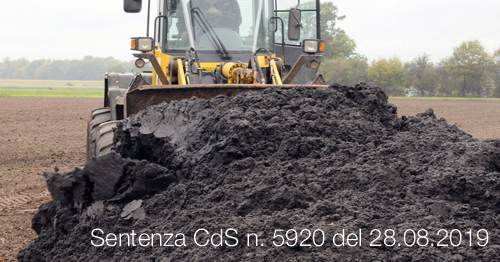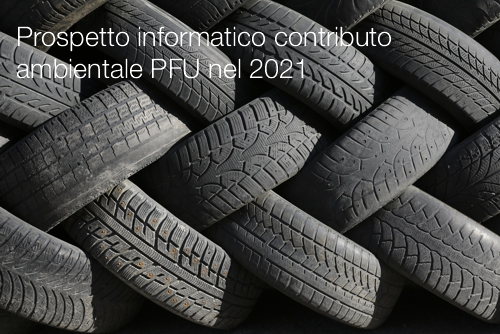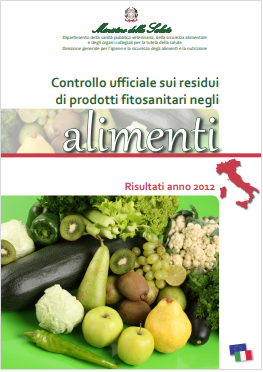Sentenza CdS n. 5920 del 28.08.2019

Sentenza CdS n. 5920 del 28.08.2019
Fanghi da depurazione - Le Regioni non hanno potere di riparametrare in aumento i valori soglia per le sostanze inquinanti previsti dal d.lgs. n. 152/2006 ai fini de...
ID 19446 | 19.04.2023
Assessment of options for reinforcing the Packaging and Packaging Waste Directive’s essential requirements and other measures to reduce the generation of packaging waste
EU 2023 - (Final report)
The Essential Requirements, which all packaging placed on the EU market needs to comply with, were first introduced in the Packaging and Packaging Waste Directive (PPWD - Directive 94/62/EC), as defined in Article 9 and Annex II.
These requirements, and the associated harmonised standards, have not changed substantially since their introduction, and previous studies have identified the Essential Requirements as potentially requiring further attention to improve packaging design, particularly in relation to the lack of recyclability of many packaging formats. In addition, the policy landscape has evolved significantly since the PPWD first established the Requirements; the 2018 revision of the PPWD included, in addition to a revision of the recycling targets for packaging waste, a mandate for the Commission to examine “the feasibility of reinforcing the essential requirements with a view to, inter alia, improving design for reuse and promoting high quality recycling, as well as strengthening their enforcement.”
This study carried out an impact assessment of different options available to reinforce the Packaging and Packaging Waste Directive’s Essential Requirements, and other measures to reduce the generation of packaging waste to transition to a low-carbon and circular economy.
_________
CONTENTS
Executive Summary
Background and Objectives
Problems, Consequences and EU intervention
Objectives and Baseline
Policy Measures and Options
1 Introduction
1.1 Political and legal context
1.2 Report overview
2 Problem definition
2.1 What are the problems?
2.1.1 High and growing levels of packaging waste
2.1.2 Barriers to packaging circularity
2.1.3 Low levels of uptake of recycled content in packaging
2.2 What are the problem drivers?
2.3 Summary of consequences
2.4 How will the problem evolve?
2.5 Who is affected and how?
3 Why should the EU act?
3.1 Legal basis and Treaty relevance
3.2 Subsidiarity: The need for EU Action
3.3 Subsidiarity: Added value of EU Action
4 Objectives
4.1 Links between objectives
4.2 Trade-offs between objectives
4.3 Intervention logic
5 Baseline
5.1 Scope/data used
5.2 Packaging waste
5.2.1 Historic Change in Composition
5.2.2 Future Projections
5.3 Recycling Rates, Residual Treatment and Litter
5.4 Environmental impacts
5.4.1 Greenhouse Gas Emissions
5.4.2 Externalities
5.4.3 Litter
5.5 Implications
5.6 Baseline Model Methodology
5.7 Drivers of Recycling Rates
6 Measures
6.1 Measures selection process
6.2 Shortlisted Measures
6.3 Selected measures
6.3.1 Waste Prevention
6.3.2 Reuse
6.3.3 Recyclability
6.3.4 Compostable Packaging
6.3.5 Hazardous substances
6.3.6 Recycled Content
6.3.7 Green Public Procurement
6.3.8 Data & Reporting
6.4 Impact assessment methodology
6.4.1 Waste Prevention and reuse
6.4.2 Recyclability
6.4.3 Recycled Content
6.4.4 Compostable Packaging
6.4.5 Financial costs model
6.4.6 Environmental impacts
6.4.7 Social impacts
7. Options assessment
7.1 Description of options
7.2 Preferred option and impacts
7.2.1 Mass flow impacts
7.2.2 Economic impacts
7.2.3 Environmental impacts
7.2.4 Social impacts
7.3 Monitoring and evaluation framework
...
Fonte: EU
Collegati

Fanghi da depurazione - Le Regioni non hanno potere di riparametrare in aumento i valori soglia per le sostanze inquinanti previsti dal d.lgs. n. 152/2006 ai fini de...

MATTM, 31.10.2020
Il documento è stato predisposto secondo le disposizioni del d.lgs n.182 del 20...

Update 22.08.2020
In allegato le Relazioni annuali Min. Salute previste dal Regolamento CE N. 882/2004 e dallo stesso Regolamento ...
Testata editoriale iscritta al n. 22/2024 del registro periodici della cancelleria del Tribunale di Perugia in data 19.11.2024